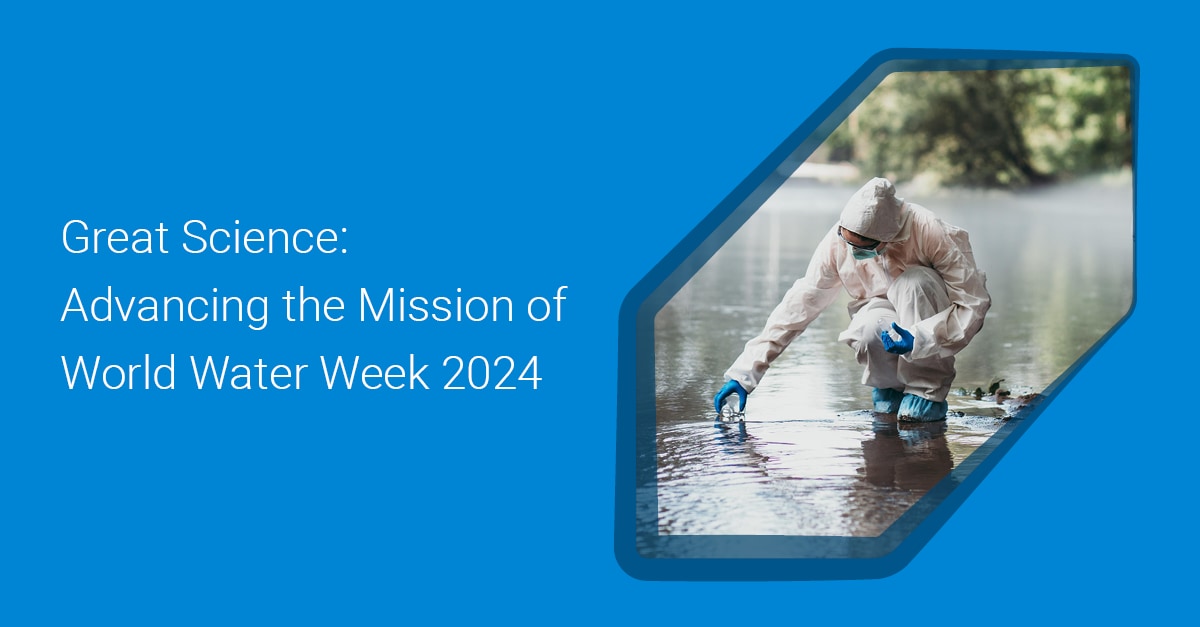Great Science:
Advancing the Mission of World Water Week 2024
Agilent, a global leader in PFAS analysis in water, actively supports the mission of World Water Week 2024, and the theme “Bridging Borders: Water for a Peaceful and Sustainable Future.” PFAS, also known as “forever chemicals” due to their long half-life, persist in the environment for decades. These long-lasting contaminants frequently appear in ecosystems worldwide, including rivers, oceans, and reservoirs. PFAS also biomagnify, meaning they increase in concentration in the tissues of organisms as they move up the food chain. To ensure ongoing public safety, PFAS needs to be carefully controlled, which requires scientists to accurately identify and quantify PFAS in the environment

A complex regulatory landscape
PFAS have a stable chemical structure and unique properties, making them useful in various consumer products. As a result, manufacturers have widely used them in household items such as non-stick cookware, cleaning products, and water-resistant fabrics. PFAS are also byproducts of many industrial processes. This ubiquity has resulted in calls for regulatory guidance and accelerated identification and monitoring.
The current regulations around PFAS are complicated, partly because their toxicity still needs to be fully understood. As a result, a variety of restrictions exist around the globe. In the U.S., for example, certain PFAS cannot be manufactured or imported without Environmental Protection Agency (EPA) notification and review under the Toxic Substances Control Act (TSCA). The European Union’s Drinking Water Directive, adopted in December 2020, requires routine monitoring of up to 20 PFAS compounds in potable water.
As scientists’ understanding of PFAS grows, more regulatory guidance is proposed and enacted. This year, the EPA ruled that companies cannot start or resume the manufacture of 329 PFAS without an EPA review and risk assessment. The EPA has also released a new National Primary Drinking Water Regulation (NPDWR) that sets out enforceable standards for six types of PFAS and certain mixtures of the substances. Meanwhile, the European Chemicals Agency (ECHA) has provided guidelines for evaluating the proposal from five EU member states to restrict over 10,000 PFAS across Europe. Other countries, including China and Australia, are also setting limits.
The need for reliable testing
Increased regulation, its growing complexity, and greater public awareness have led to a rising demand for PFAS testing. Testing labs should establish appropriate regulatory or testing methods, including understanding which matrices to use and the desired detection levels. Industrial manufacturers likely need to conduct testing to meet specific guidelines for raw materials or waste discharge. Regulators trying to identify new PFAS compounds may need to investigate the required tools.

Determining the sample process will depend on a range of factors, including the regulatory method used and the resulting metrics. The type of sample matrix (drinking water, air, soil, etc.) also matters. Some PFAS compounds are volatile and can evaporate, so preventing sample loss during transportation is crucial. The gold standard for PFAS quantification is liquid chromatography coupled with tandem mass spectrometry (LC-MS/MS) using electrospray ionization (ESI). Triple quadrupole (TQ) mass spectrometers provide robust, sensitive, and targeted data. In contrast, high-resolution mass spectrometers (HRMS), such as quadrupole time-of-flight (Q-TOF), are required to identify new and unknown PFAS compounds. Many scientists use solid phase extraction (SPE) with an anion exchange resin to extract PFAS from drinking water samples.
Remaining steadfast
Agilent remains steadfast in its commitment to providing trusted answers and supporting environmental well-being. Agilent has the technical expertise to enable testing labs to obtain accurate and reliable results, assist manufacturers in ensuring compliance with safety standards, and aid regulators in monitoring and controlling PFAS levels, ultimately helping to protect our precious global water supplies.